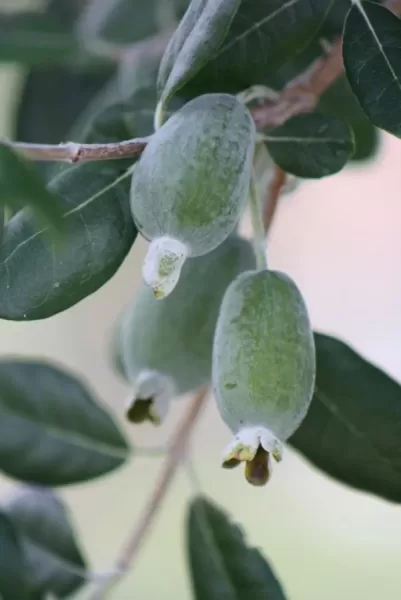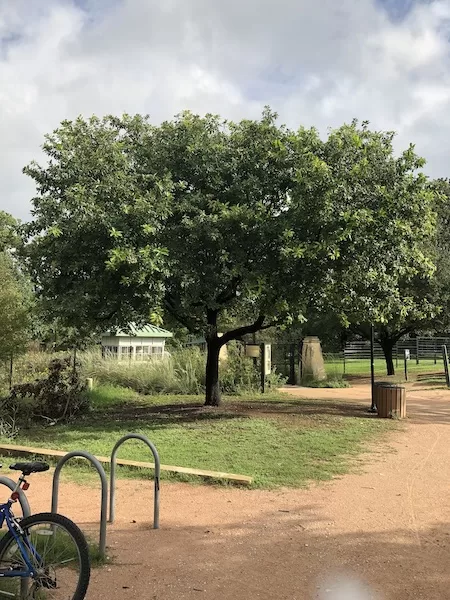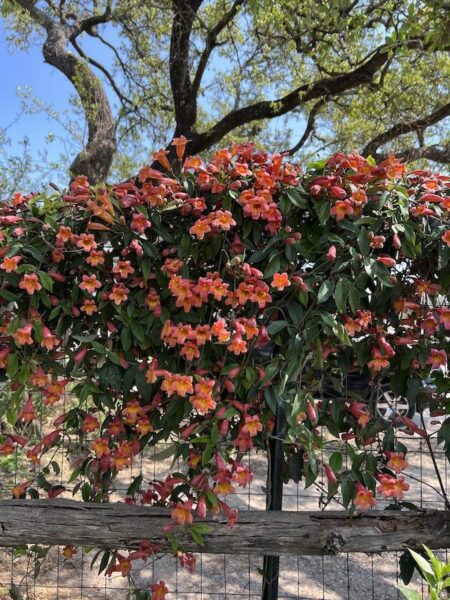Looking for screening options? Tired of people looking in your window or watching you in your backyard?
We get it. Nothing personal, we get it, people want their privacy. Good thing is there are lots of options. Evergreen trees and shrubs make great additions to any landscape. In the Austin area many new homes in subdivisions have lovely landscapes, but little or no privacy. Everybody likes a little screening, even neighbors on the best or terms need their privacy. A fence is not the only option for privacy, screening shrubs offer privacy between lots and add beauty to your landscape and are natural and easy way to provide screens and privacy.
Recommendations for the Austin Area:
Here are a few great evergreen screening shrubs that provide year-round privacy and are well suited for the landscape here in the Austin area.
Arizona Cypress ‘Blue Ice’ (Cupressus arizonica)
The Arizona Cypress ‘Blue Ice’ is a fast growing evergreen tree. The blue foliage is remarkable and very distinct. It grows in a conical form and perfect for creating a hedge or a screening wall. Drought tolerant once established, these do exceptionally well in the Central Texas area. They grow to heights of 15 – 25 feet and do best in full to part sun.
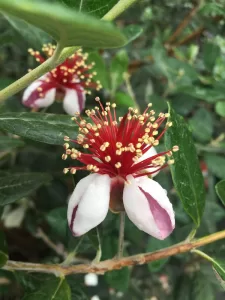 Pineapple Guava (Feijoa)
Pineapple Guava (Feijoa)
The Pineapple Guava is a fast-growing evergreen shrub. You can trim/ train it as a single trunk tree form. Another option is a multi-trunk tree form. You can also grow it full to the ground, therefore creating ultimate screening top to bottom. The blooms resemble a Hibiscus and are simply stunning. They also produce an edible fruit- it resembles the texture and taste of a Kiwi. The Pineapple Guava is unique in that it has green leaves on the top and silver on the back creating a wonderful contrast. They can reach 10’ x 10’ fairly quickly and easily with proper care.
Wax Myrtle (Myrcia cerifera)
The Wax Myrtle is a fast-growing evergreen shrub native to the Austin area. The Wax Myrtle can reach 12 to 15 feet tall. Shear to form a hedge, multi trunk shrub, or small tree.
Sweet Viburnum (Viburnum odoratissimum)
The Sweet Viburnum is a glossy green evergreen. In the spring, you will see subtle white blossoms adding beauty and privacy to your landscape. It can reach 10 to 12 feet. Hedge for shape and density.
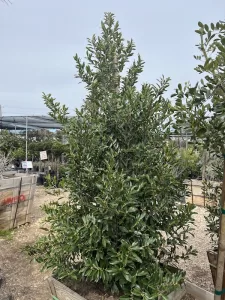 Compact Cherry Laurel (Prunus caroliniana)
Compact Cherry Laurel (Prunus caroliniana)
The Compact Cherry Laurel is a native shrub is a favorite among homeowners. It provides a nice dense green screen perfect for screening neighbors, roads and anything else you are trying to block. The nice glossy leaf, more formal look. Left unshaped, the Compact Cherry Laurel will grow in a tear drop form. If you desire a more manicured look, they are easily sheared / pruned to shape it into standard tree form. They can reach 15 to 25 feet. They are more on the drought tolerant side once established, though keep in mind when it is 100+ degrees they will want some supplemental water. This is an excellent option for screening as it checks a lot of the boxes. In the spring, it blooms white bloom clusters and attracts the bees and the butterflies.
Magnolia (Magnolia grandiflora)
Magnolias make a wonderful evergreen dense hedge. They have large glossy green leaves that help to create an elegant screening fence. Depending on the variety, they can reach up to heights of 30-40 feet. The Magnolias all have the fragrant saucer white flat blooms. As with many of the other plants mentioned here, these can be trained to be standard tree form for a lollipop look or they can be full to the ground. One thing to consider when planting the Magnolias is that they will need regular irrigation.
Loquat (Eriobotrya japonica)
The Loquat is a fast-growing evergreen with large foliage and sweet edible fruit in the summer. The Loquats are frequently grown in standard form/ single trunk tree but can also be left to grow as a shrub (low branching or full to the ground). The Loquats can reach 10 to 15 feet.
It is important to maintain proper irrigation as shrubs need a lot of water to get established. Subsequently, you should water your new shrubs each day to develop strong healthy roots. Watering intervals will vary. This is dependent on weather, climate and sun exposure. In other words, know your spot and your area.
Planting the Shrubs
Dig the hole for the new plant with enough room to add new soil. In Austin this can be challenging, so try to dig a large enough space to not only be able to plant the new plant, but allow enough space for new soil In addition, use a good landscaping soil to give the plant good fresh new soil to encourage new growth. Firmly pack the soil; be careful not to make it rock solid, as it needs to let in air and water in. Cover the new planting with a few inches of mulch to retain moisture and protect the roots. In conclusion, be careful not to pack the mulch up around the base of the plant.
